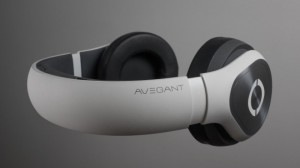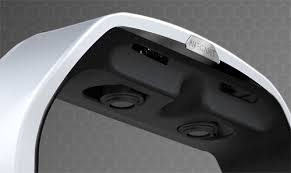I remember reading this particular headline from The Verge back in 2013:
Avegant Glyph: The virtual reality headset made for the mainstream. Part Google Glass, part Oculus Rift, part Beats by Dre”.


Avegant Glyph has a different style than other VR headsets you see out there. They look just like a pair of headphones. In fact, they most definitely are headphones, but can tilt forward over your eyes to transition into an immersive multimedia headset. They also differ in function than say, the Oculus Rift, by not only being a VR device exclusively. Rather, it's an overall entertainment device, with the option of using VR if you want. VR-mode or not, Avegant can display movies, TV shows, games, and stereoscopic 3D (PC World). Pull them over your eyes and you've got a theater in front of your face! Talk about looking like a weirdo on that long plane ride, but who cares?


Multiple media sources suggest an on going issue with the way the device fits. Because the headset isn't adjustable (I know, shocker), users have not been able to get the headset to fit right when pulled down over the eyes. Luckily, the company's Chief Strategy Officer, Edward Tang, told Engadget that they are hard at work trying to come up with ear pads and nose pieces to “fit the widest range of people”.
The company stuck with the $499 price tag it created from the get-go, however this might change to $599 once pre-order is over (around January 15th).

 Laptop & Tablet Parts
Laptop & Tablet Parts




















